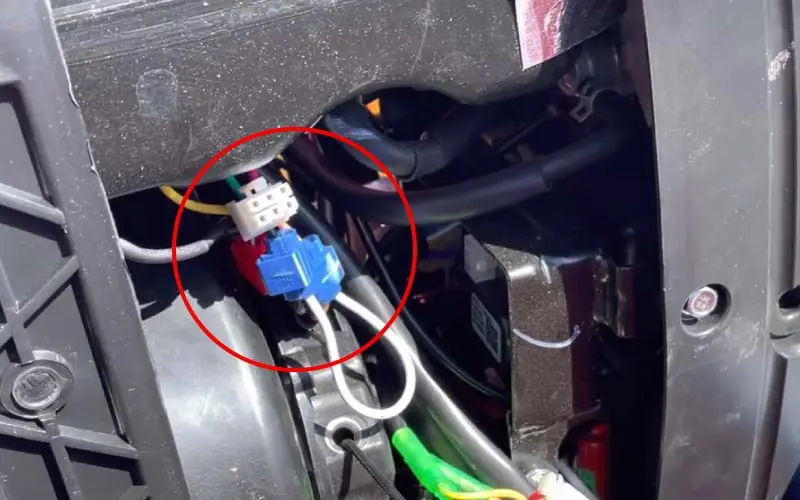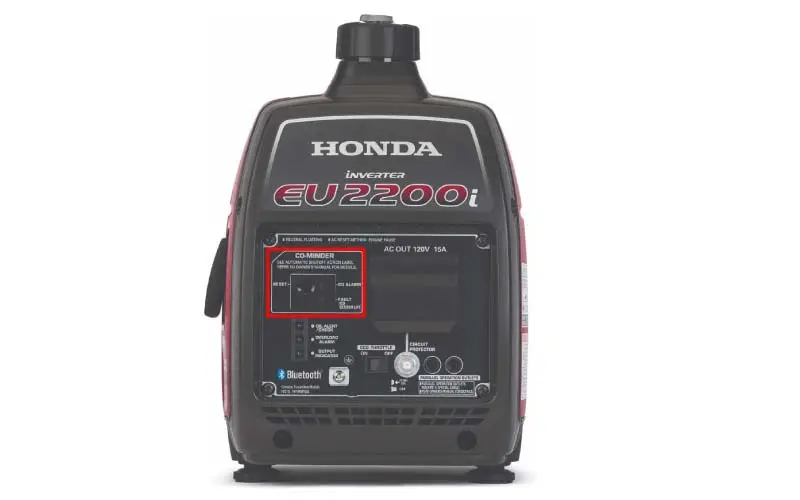How to Bypass CO Sensor on Generator? – [5 – Steps Guide]
The frequent beeping/blinking of the CO sensor even in a well-ventilated area is a clear indication that there is something wrong with the CO sensor and it needs a thorough inspection as soon as possible.
This article aims to provide you with a step-by-step guide about “How to Bypass CO Sensor on Generator safely?”
Safety Checklist
How to Bypass CO Sensor on Generator?
- Turn off the generator and keep it in a well-ventilated area for a while until the engine and other parts come to room temperature.
- Locate the CO sensor and disconnect its connections, most of the generators have CO sensors in the control panel.

- Fire up the generator and let it run for a while, if the problem is gone, the CO sensor is the culprit and needs to be replaced.
- Purchase another CO sensor and connect it to the machine.
- For testing purposes, you can run the generator in a closed space for a while to see if the new CO sensor is working or not.
Recommended Guide: How to Bypass Low oil sensor on a generator?
Why Do I Need to Bypass the Co Sensor?
A faulty CO sensor will cause problems like, irregular beeping or the generator starting for a few seconds and shutting off automatically, doesn’t matter whether you have placed the machine in a well-ventilated area or not.
Bypassing the CO sensor will let you know the core problem, you just need to disconnect the CO sensor for a while and if the generator works fine, you need to replace the CO sensor.
CAUTION: Removing the CO sensor unnecessarily will not only lead you to a heavy fine but also it’s a life-threatening practice.
Do You Really Need a CO Sensor on a Generator?
As per the statement of the CDC (Center for Diseases Control and Prevention), Carbon monoxide (CO) kills more than 400 people every year only in the USA.
The dangerous concentration of CO in a closed space could be life-threatening that’s why modern generators are equipped with super-sensitive CO sensors to detect the concentration of the CO in an instant.
The bottom line is, the CO sensor (carbon monoxide) acts like an alarm once the concentration of CO reaches a dangerous level, the generator starts beeping and shuts off automatically.
Firstly you don’t have to place the generator in a closed space or window faced, however, if you have doubt that the CO can enter the bedroom and other sensitive areas, make sure to install a CO sensor in the rooms as well.
How Does a Co-Sensor on a Generator Work?
The CO sensor detects the concentration of carbon monoxide and once it reaches dangerous levels the alarm beeps about 4 – 5 times and eventually auto shut off the engine if the owner is ignoring it.
How Do I Know if My Generator’s Co Detector Is Bad?
The following could be the symptoms of a bad or defective CO sensor.
- CO sensor is constantly beeping even if you have placed the generator in a well-ventilated area
- The generator shuts off automatically after 4 – 5 beeps of the CO detector.
- CO sensor is not throwing warning signs even if the generator is operated for hours in a closed space.
How Do You Reset a Co Sensor on a Generator?
For resting the CO sensor of the generator we highly recommend going through the user manual first.
Most of the machines have a reset button beside the CO sensor, you just need to press it and wait for a while until the sensor is cleared from the carbon Monoxide.

Verdicts
CO sensor is the only weapon to sense the presence of a silent killer (CO gas) in a closed space make sure to bypass it wisely.
Bypassing the CO sensor unnecessarily is life-threatening, make sure to bypass it in a ventilated area by following the user manual, once you found the root cause replace it again.
Hope we have delivered what we have promised; we will be more than happy to assist you, Feel Free to leave a comment!
How Can I Inspect the Co Sensor?
To inspect the CO sensor you have to bypass it for a while and fire up the generator to observe whether the problem is there or not.
How Often Does the Co-minder Sensor Need Replacement?
As per the recommendation of First alert, Fireline, and Kidda a CO detector could last between 5 to 10 years depending on the quality, however, we recommend reading the user manual before making a decision.
Why Does A CO Detector Expire?
Like other electronic gadgets, CO sensors can be expired within 5 – 10 years and lose the power of detection, make sure to inspect it periodically or get a super durable separate CO sensor that should last at least for a decay.
Can You Detect Co Without a Detector?
No, Carbon monoxide is a colorless and odorless gas that can be impossible to detect without a CO detector.
Do Whole House Generators Give off Carbon Monoxide?
Yes, standby generators emit carbon monoxide; make sure to install a CO detector in your house if your standby machine doesn’t have one.

Kashif has been a valuable asset to the electric generator industry for over 5 years. Now, As a skilled energy engineer, he’s been on the front lines of diagnosing problems, fixing broken parts, and performing routine maintenance tasks to keep generators running smoothly.
